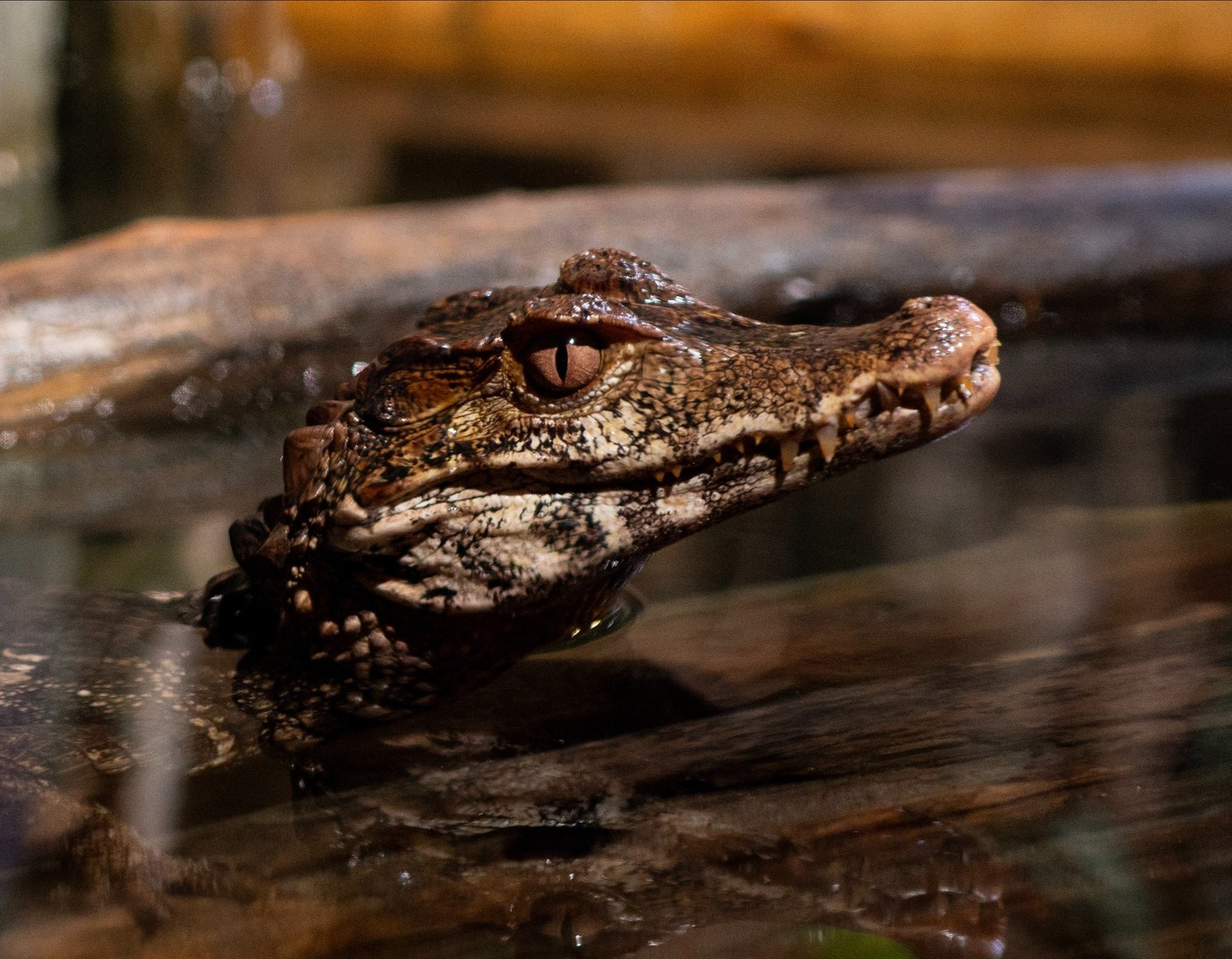- Cuvier’s dwarf caimans are opportunistic feeders that adapt their diet to available resources.
- The caimans utilize specialized dental adaptations to consume hard-shelled and bony prey effectively.
- These reptiles have a diverse diet including aquatic and terrestrial animals such as fish, crustaceans, mollusks, amphibians, and small mammals.
- Conservation efforts and zoo management play vital roles in protecting Cuvier’s dwarf caimans and their habitats.
- Public exhibitions, like the Dragons exhibit, help raise awareness and appreciation for caimans.
Cuvier’s dwarf caimans (Paleosuchus palpebrosus) represent a fascinating branch of the Alligatoridae family. They are the smallest extant species of caiman, typically reaching lengths of about 1.5 meters (5 feet). Native to South America, these caimans are found within forested areas near freshwater bodies. Understanding their dietary habits offers insights into their robust adaptability—a trait that is critical for survival in their native environments.
These caimans exhibit a remarkable feeding flexibility, positioning them as quintessential opportunistic feeders capable of altering their diets based on available food sources. This adaptability is a survival strategy that allows them to thrive in varying ecological niches. From stagnant waters of rainforests to fast-flowing rivers, Cuvier’s dwarf caimans have refined their feeding strategies to suit different habitats. Such flexibility not only aids in personal survival but also helps maintain the ecological balance within their environment as they play a role both as predators and scavengers.
At the heart of their diverse dietary capability is a specialized dental structure, featuring approximately 80 short, backward-curved teeth. These teeth are particularly adept at grasping and dismembering resistant prey, such as creatures with hard shells or those with bony exteriors. The backward curvature ensures they can securely hold slippery prey, minimizing escape chances. This dental adaptation is a prime example of evolutionary fine-tuning, enabling the caimans to target a broad spectrum of prey—from sleek fish to armored crustaceans.
The Cuvier’s dwarf caiman’s diet includes a mix of aquatic species, such as various fish, crustaceans, and mollusks, as well as terrestrial organisms like small mammals and amphibians. This varied diet underscores their ability to utilize whatever resources are accessible in their environment. During certain seasons, or when climatic conditions affect prey abundance, these caimans may shift their focus toward different prey species, showcasing remarkable dietary flexibility. This plasticity aids in mitigating impacts from environmental changes or reductions in specific prey availability.
The conservation and sustainable management of Cuvier’s dwarf caimans are crucial given the threats they face due to habitat destruction, pollution, and illegal hunting. Conservationists and researchers work to develop effective strategies that address these threats, ensuring these creatures continue to thrive in the wild. Zoos play an integral part in this effort by providing conservation programs and breeding initiatives. Additionally, zoos often act as educational gateways, increasing public awareness of the ecological roles and conservation needs of the species.
Public exhibitions, such as the innovative Dragons exhibit, provide an engaging platform to educate visitors about the Cuvier’s dwarf caiman. These exhibits are more than just showcases of wildlife; they are pivotal in fostering a deeper understanding and appreciation of the challenges facing these reptiles. By learning about the caimans in structured and interactive settings, visitors are likely to leave with a greater sense of responsibility toward conservation efforts, supporting broader environmental stewardship goals.
Thus, by studying Cuvier’s dwarf caimans, we gain insights not only into the species itself but also into the broader ecological webs they are part of. This deepens our understanding of biodiversity and the need to safeguard the natural habitats that support species like the caiman. Through combined efforts in research, conservation, and public engagement, we can contribute meaningfully to the preservation of this captivating species.
*****
Source Description
Cuvier’s dwarf caimans are known to be opportunistic feeders 🐊 This means they can eat a variety of food sources and can adapt to what’s available!
These caimans have about 80 short, backward-curved teeth, which help them to bite into hard-shelled or bony prey. They generally feed on fish, crabs, shrimps, molluscs, and other invertebrates, as well as amphibians and small mammals – both on land and in the water!
Come see the Cuvier’s dwarf caiman for yourself in our new Dragons exhibit 🌟
🫧
Image Description: Close-up of a caiman in water, partially submerged, with its head and snout visible against a wooden background.


